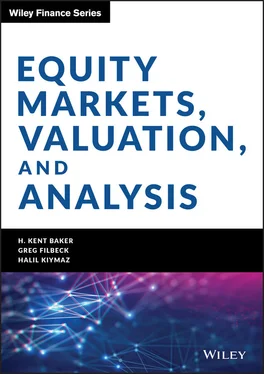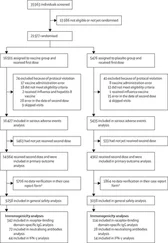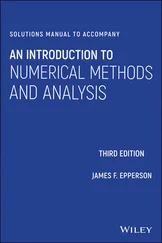Securities regulation clearly improves measures of market efficiency, such as liquidity. Securities regulation likewise improves other corporate outcomes such as M&As and innovation. Further work on the causes and consequences of different types of securities regulation and different types of outcomes would help guide academics, practitioners, and regulators alike.
1 Explain the nature and function of trading rules on stock exchanges.
2 Differentiate between trading rules and surveillance.
3 Identify the criticisms and benefits of securities regulation.
4 Discuss how trading rules differ across countries.
5 Discuss how trading rules and surveillance affect firm outcomes such as M&As and innovation.
1 Aitken, Michael, Douglas J. Cumming, and Feng Zhan. 2015a. “Exchange Trading Rules, Surveillance, and Suspected Insider Trading.” Journal of Corporate Finance 34:C, 311–330.
2 Aitken, Michael, Douglas J. Cumming, and Feng Zhan. 2015b. “High Frequency Trading and End-of-Day Price Dislocation.” Journal of Banking and Finance 59:C, 330–349.
3 Aitken, Michael, Douglas J. Cumming, and Feng Zhan. 2017. “Trade Size, High-Frequency Trading, and Colocation around the World.” The European Journal of Finance 23:7–9, 781–801.
4 Aitken, Michael, and Audris Siow. 2003. “Ranking Equity Markets on the Basis of Market Efficiency and Integrity.” In Hewlett-Packard Handbook of World Stock, Derivative & Commodity Exchanges, edited by Herbie Skeete, pp. xlix–lv. London: Mondo Visione Ltd.
5 Christensen, Hans B., Luzi Hail, and Christian Leuz. 2016. “Capital-Market Effects of Securities Regulation: Prior Conditions, Implementation, and Enforcement.” Review of Financial Studies 29:11, 2885–2924.
6 Cumming, Douglas J, Alexander Groh, and Sofia A. Johan. 2018. “Same Rules, Different Enforcement: Market Abuse in Europe.” Journal of International Financial Markets Institutions & Money 54:1, 130–151.
7 Cumming, Douglas J., Wenxuan Hou, and Eliza Wu. 2018. “Exchange Trading Rules, Governance, and the Trading Location of Cross-Listed Stocks.” European Journal of Finance 24:16, 1453–1484.
8 Cumming, Douglas J., Shan Ji, Sofia A. Johan, and Monika Tarsalewska. 2019. “End-of-Day Price Manipulation and M&As.” British Journal of Management, forthcoming.
9 Cumming, Douglas J., Shan Ji, Rejo Peter, and Monika Tarsalewska. 2018. “Market Manipulation and Innovation.”
10 Cumming, Douglas J., and Sofia A. Johan. 2008. “Global Market Surveillance.” American Law and Economics Review 10:2, 454–506.
11 Cumming, Douglas J., and Sofia A. Johan. 2019. “Capital-Market Effects of Securities Regulation: Prior Conditions, Implementation, and Enforcement Revisited.” Finance Research Letters, forthcoming.
12 Cumming, Douglas J., Sofia A. Johan, and Dan Li. 2011. “Exchange Trading Rules and Stock Market Liquidity.” Journal of Financial Economics 99:3, 651–671.
13 Domowitz, Ian. 2012. Market Abuse and Surveillance. London: Foresight, Government Office for Science. Available at https://www.gov.uk/government/uploads/system/uploads/attachment_data/file/289053/12-1076-eia17-market-abuse-and-surveillance.pdf/.
14 Lewis, Michael. 2014. Flash Boys. New York, NY: W. W. Norton & Company.
15 Merrick, John J., Narayan Y. Naik, and Pradeep K. Yadav. 2005. “Strategic Trading Behavior and Price Distortion in a Manipulated Market: Anatomy of a Squeeze.” Journal of Financial Economics 77:1, 171–218.
Конец ознакомительного фрагмента.
Текст предоставлен ООО «ЛитРес».
Прочитайте эту книгу целиком, на ЛитРес.
Безопасно оплатить книгу можно банковской картой Visa, MasterCard, Maestro, со счета мобильного телефона, с платежного терминала, в салоне МТС или Связной, через PayPal, WebMoney, Яндекс.Деньги, QIWI Кошелек, бонусными картами или другим удобным Вам способом.












